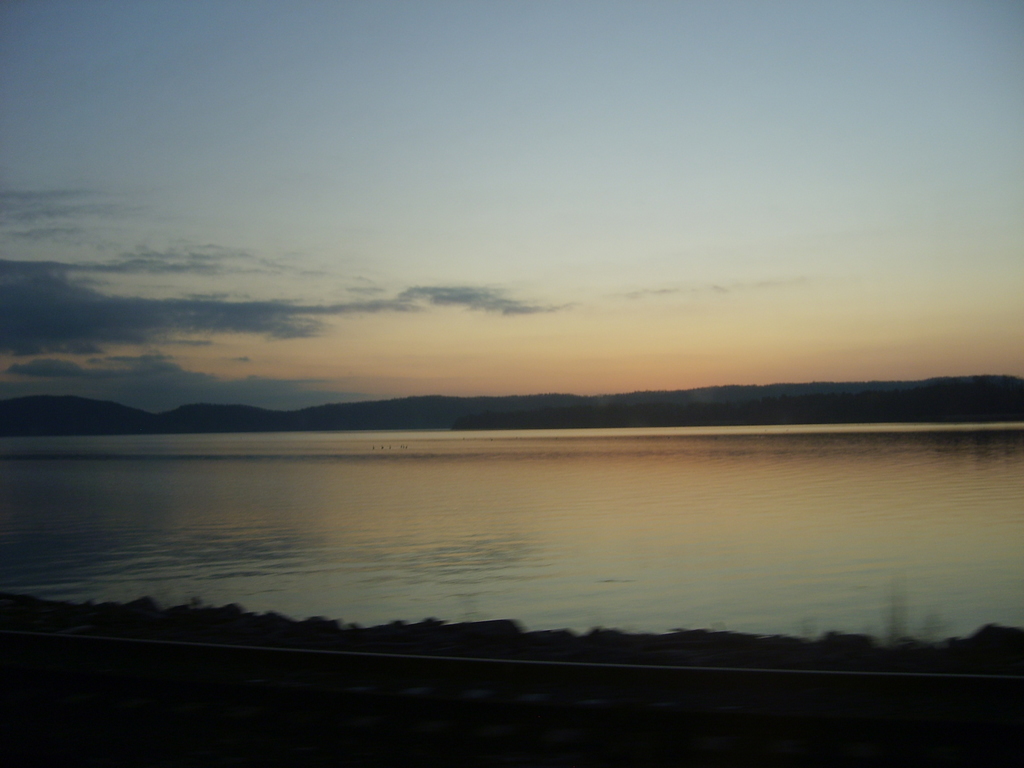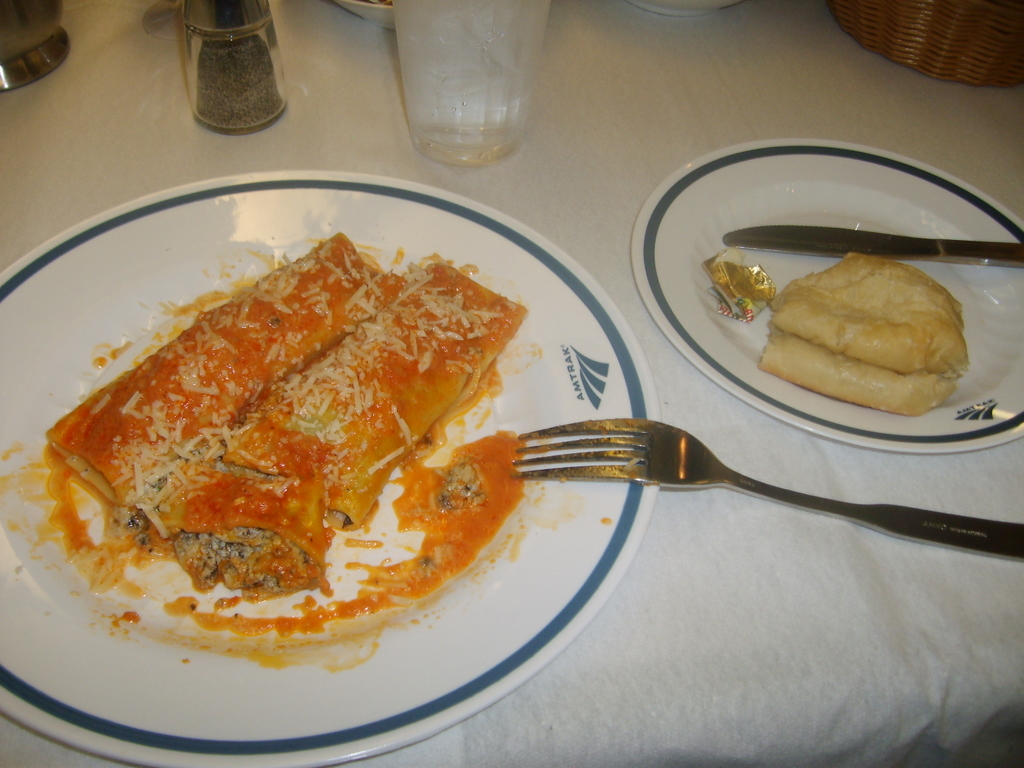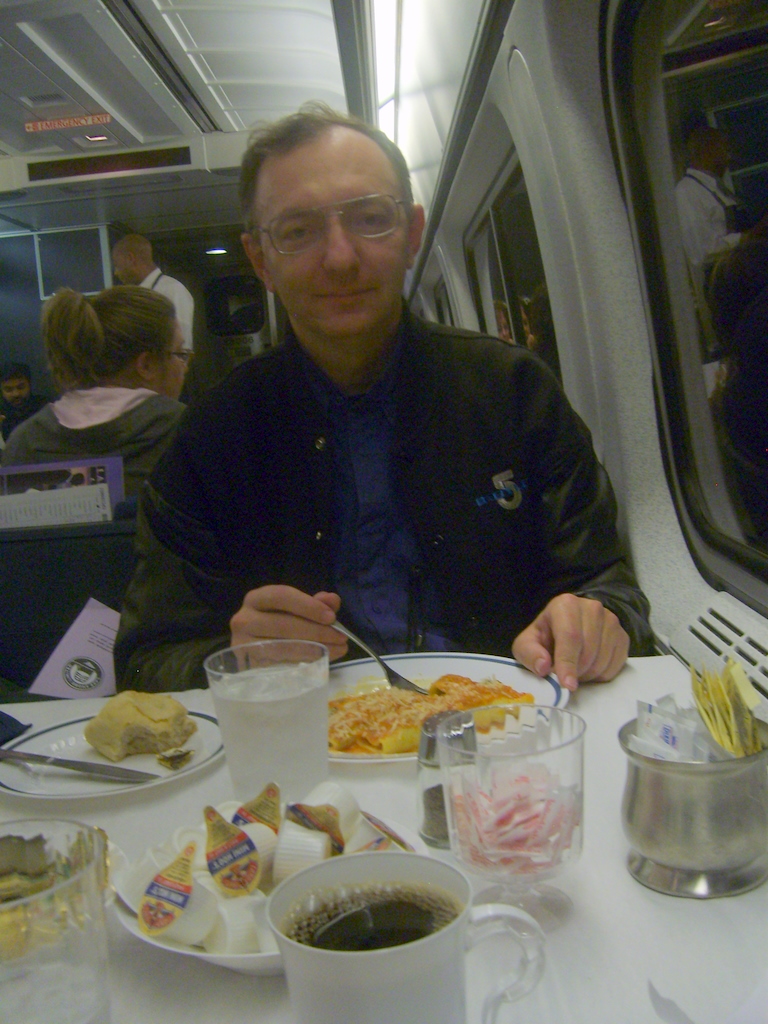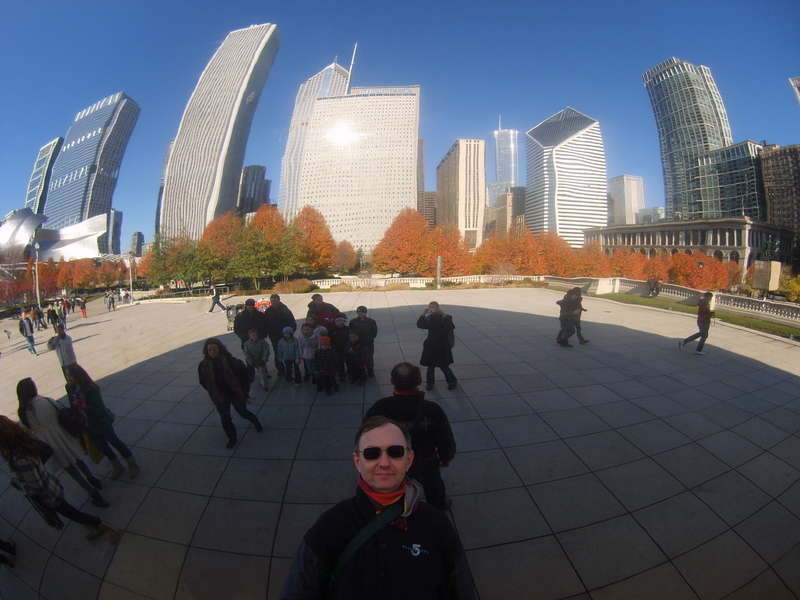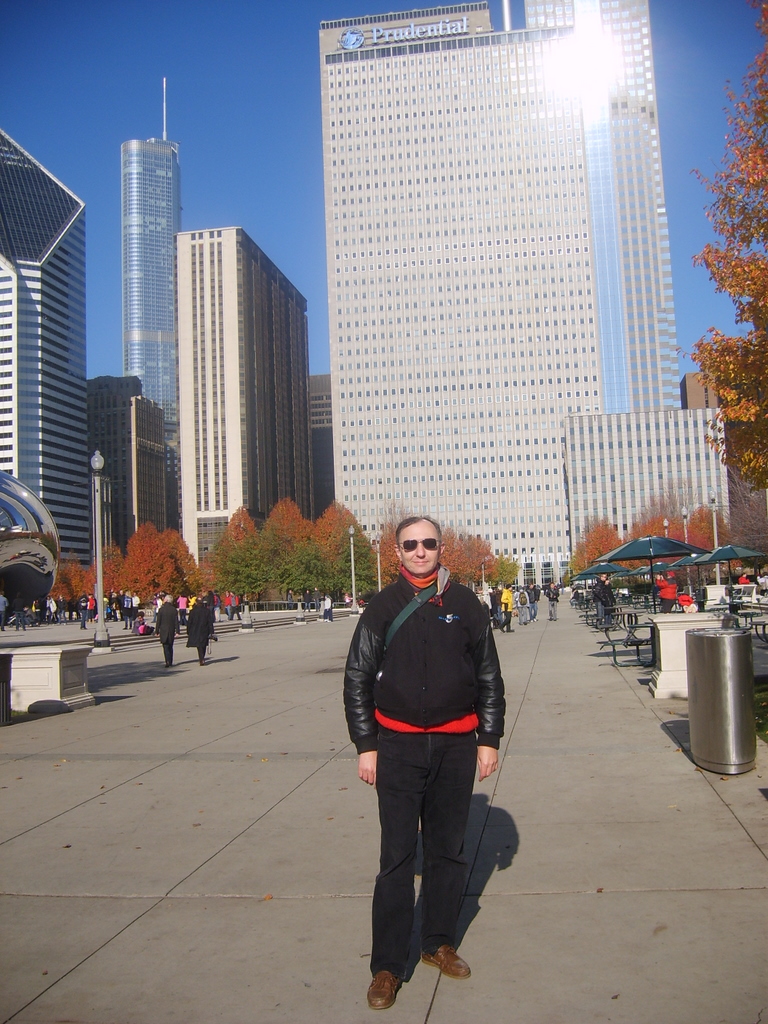| Coast To Coast |
 English -
English -  Italiano
Italiano
|
To the WestMy trip back to California starts at New York's Pennsylvania station. The station is under the Madison Square Garden, which is probably convenient for people who want to attend the shows held there, but it's confusing to the occasional tourist who expects some more prominent building (such as the other New York's train station, Grand Central).The trip will take place on 2 Amtrak trains: the Lakeshore Limited, from New York to Chicago, and the California Zephyr from Chicago to Reno, Nevada (the Zephyr actually goes to Emeryville, but I'm going to stop in Reno and continue by Amtrak California to San Jose). As was the case with the trip by car, departing in the afternoon leaves only one hour of light to see the landscape leaving New York. The train travels along the eastern shore of the Hudson river,
going northward until Albany where it crosses the river and finally heads to the west. Lunch is served in 3 shifts. You have to make a reservation and pick which shift you want: 5:00 PM, 7:30 PM or 8:00 PM. Pasta, chicken, turkey or beef, from $12 to $22. I pick 7:30 PM. Dinner is actually quite good. The food is prepared on the train. If you decide to use the snack bar you'll get pre-packaged food, heated on demand, but if you chose to use the dining car then the service and quality of the food is that of a real restaurant. Only criticism is that you have to use whatever seat the attendant tells you, probably because there are not enough tables for all the guests and you have to share the table with some stranger. That's how I got to get my picture while dining on a plate of manicotti.
Albany: the train arrived 15 minutes early. The train from Boston was attached at the head of the train from NY. While waiting, someone mentioned that there are vending machines in the station. Since a soda is $2 on the train, I decide to get off a few minutes to buy a couple of bottles of water for $1.25 each. Trying to get back to the platform the automatic doors won't open. I'm told that the doors only open for people entering the station from the platform, and are locked for people wanting to access the platform until 10 minutes before departure time. Fortunately someone climbs the stairs and enters the station from the platform, thus letting us go back into the train. This seems to be a general policy in many stations with an enclosed office: you are kept in the station's building until only a few minutes before the departure, and often visitors and friends are not allowed to come with you to the platform. It was the same in Reno and in Salt Lake City. The night was uneventful. Since it was already dark, there was nothing to see. I used my netbook, taking advantage of the power outlet that is available at every seat in the coach car, and wrote my impression of the day, and then settled for the night. Sleeping in the coach seat was not too bad. Luckly there was no one sitting next to me (the train was only 60% full), so I could lay down on both seats, although I could not stretch completely despite the generous space between seats. The feeling is that of riding in business class on an airplane, but without the stress that I get when I have to fly. The ride is not as smooth as on an airplane, though, since every time the train goes through a switch or a level crossing you can hear the different sound of the rails. The next morning we approach Chicago. Traveling all night saves a lot of time, and you don't really feel having traveled almost 1000 miles. Chicago Union Station being a head station does not allow trains to run through. Since all seats in the passenger cars always face the forward direction, and possibly to avoid trains run offs at the station, the train had to stop at the Union Pacific freigh yard and then back up into the passenger terminal. Having 4 hours to wait for the next train, I leave my big bag into a locker in the station (for $3 initial fee, plus an amount that depends on when I take the bag back), and walk out the station to visit downtown. Chicago seems a lot different from New York City. Immediately outside the station I'm approached by a few people who offer their "services" to take me wherever I need to go. I brush them away, telling them that I'm not going anywhere. The feeling wasn't that of a safe place. Luckily, a lot of other people were walking out of the station with cameras, looking like tourists who were about to explore the city, so I just follow them, not after having recorded the names of the streets where the station is. Following those people I walk through downtown in what seems to be the general direction to the main tourist attraction. The feeling of unsafety persists: brand new glass and steel buildings alternate with old and dirty brick buildings that seem to be abandoned. The side roads are so narrow and dark even in the middle of the sunny day that I wouldn't want to be there alone. I don't see many police around, and a lot more poor people than in New York, until I reach the front of the Macy's store, where obviously well off people have just finished their "black Friday" shopping. Continuing towards the east, I finally reach the end of the buildings and the large area called "Millennium Park". Here I can see the splendor of the city's skyline and the wealth of attractions, from the Art Museum to the "AT&T Cloud" and various other works of art.
Back at the station, I recover my bag and pay an additional $6 (for a total of $9 for 3.5 hours of service), and get on the California Zephyr that will travel through all the Mid West (Illinois, Iowa, Nebraska, Colorado) and the West (Colorado, Utah, Nevada, California). 1900 miles in 2 days. Illinois seems unremarkable. A lot of cultivated fields go by the train's window, until darkness comes to hide the monotonous landscape. I'm told that Iowa and Nebraska are pretty much the same. I spend the night trying to sleep. Unfortunately a crying baby is sitting just a few rows from me, and she kept crying all night, making it a miserable experience. When a lot of people descend from the train, I get my boarding pass and move away from the crying baby to a different car. The other reason for moving to a different car was that only that new car had power outlets at every seat. All other cars, including the lounge and dining cars had no outlet at all, forcing me not to use my netbook for too long, since I'd have no way to recharge the batteries. We arrive the next morning at Denver. The station building is quite large, for just 2 "real" trains a day. There are a number of bus connections that are also served by the station, and the light rail is on the other side of the train tracks. Denver being a head station, like Chicago, forced the train to waste time for its usual stop and back up maneuver. Leaving Denver, the climb to the Rockies was rather slow. The best view on the eastern side of the Rockies is on the right-hand side of the train, since on the left-hand side the rocks are quite close to the tracks. On the descent on the western side of the Rockies we stop to let the eastbound Zephyr pass though a single-track section. After it had passed, the conductor announced that the switch was frozen and it had to be thrown manually, which caused a 10 minutes delay. Many people got on the train on the west side of the mountain. They were probably tourists visiting the Rockies for the holidays. Most of them would disembark (or, as the conductor says "de-train") at Salt Lake City. Only about one car (the last one) had people that were directed to Reno, Sacramento or Emeryville. In a couple of occasions I visited the last car to record some view from the back window of the car, while there still was light. The views must be quite nice as the train passed through the canyons that delimit the lower side of the Rockies, before the open desert. It seems that a favorite activity of the guests of the lounge car is to try to spot wildlife as the train travels down from the Rockies. Several people pointed excitedly to me when they noticed bald eagles resting on the branch of trees. I was told that sometime you can also see mountain goats and deer (I did see one deer standing quite close to the tracks). Dinner on the Zephyr was served at 5:00, 5:30, 6:00, 6:30, 7:00 and 7:30. The pasta was $12. Cheese ravioli with marinara sauce. We arrive in Salt Lake City 40 minutes early. Salt Lake City station is a small building at one end of the terminal. Most tracks are for light rail transit. The Amtrak train stopped at a track between the light rail tracks and the freight yard. I had to walk all the way to the head of the train and cross the tracks to get to the station to buy a bottled drink for $1.50, which considering the elevation of the city, and the winter-like weather, wasn't such a pleasant experience. I get back in the train as soon as possible (I also notice that the attendants who get off the train at every stop wear a thick jacket to protect them from the cold of the night stops). The Denver crew was replaced by the Salt Lake City crew. The locomotive was also refueled. The Utah Transit Authority had a train stopped at Salt Lake Central, with 2-decks cars with diesel locomotive similar to Amtrak California. I discover later that it's a new local service that will extend to the farthest suburbs and eventually all the way to Provo. The next day is all Nevada. The Nevada desert is not as beautiful as the Arizona or Colorado desert, so it's not very exciting. I arrived in Reno, and get off the train to make room for a lot of people who wanted to get on. Apparently the Reno-Sacramento section of the trip was sold out, which is why I would have had to pay a lot more to get all the way to Emeryville on the Zephyr. Instead I chose to take the next service from Reno to Sacramento, a bus service provided by Amtrak California as an extension of their Capitols Corridor service. The bus leaves 2 and a half hours later, so I have time to visit the Harrah's Casino, which is just across the street from the station, and have a large all-you-can-eat buffet lunch for $14. The dessert tray is especially rich. :) I go back to the station and go on the bus. Since I'm not particularly excited about riding busses I doze off for most of the trip. The bus was almost full, and since the driver knew there were no passengers getting on or off at the intermediate stations, he didn't stop the bus at any of the scheduled stops, driving instead directly to Sacramento. Imagine my surprise in seeing the California Zephyr train that I had left in Reno entering the Sacramento station at exactly the same time as our bus was stopping in front of the station. This clearly means that the train had to travel very slowly when crossing the Sierra Nevada; it clearly could not compete with our bus traveling at 60 mph on the I-80 freeway. Given the speed of the bus, I'm able to get on the Capitols Corridor 3:15 PM train to San Jose. This train departs before the Zephyr and stops at every station, so if you need to go beyond Emeryville you would have to get off the Zephyr in Sacramento anyway, or wait for the next Capitols in Emeryville, which is one and a half hour later. The Capitols service uses 2-decks cars with power outlets at every seat. It has a snack bar service, and is allegedly the third most traveled Amtrak service, after the North-East Corridor (Boston-New York-Washington) and the Southern California Santa Barbara-Los Angeles-San Diego service. The train is indeed almost full, although many people got off before Oakland and it was almost empty when we reached San Jose. I admire the track that travels along the Bay between Martinez and Richmond. It's worth taking this short trip just to see the Bay. I realize how lucky I am to live in California and to have come back home to the sunny and warm weather.
|
|

